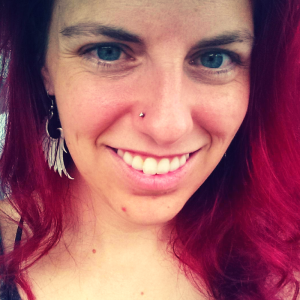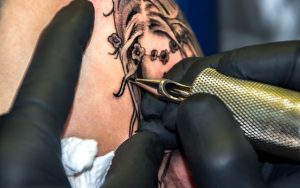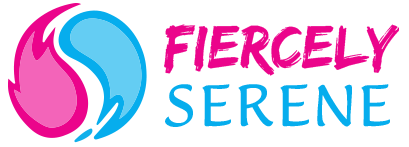Body Modification
Earlier this week, I got my nostril pierced. Getting a piercing has been on my mind repeatedly over the past few years, despite a negative experience with a navel piercing about a decade ago, and after some debate and research, I finally decided to just pull the trigger.
For now, it’s just a little stud; I may swap out a small ring sometime to see how it looks. My other possible option was an eyebrow piercing, but honestly I’m very happy with the nostril so far and think I made the right choice!

Oh, and I dyed my hair again.
During my research and contemplation, the words “body modification” came up often. I started thinking more about what those words really mean. Typically you’ll hear “body modification” in reference to things like piercings and tattoos. More “extreme” body modification includes scarification, tongue splitting, and subdermal implants.
But the true definition of body modification includes ANY intentional change to one’s appearance, whether it’s for aesthetics, religious tradition, or any other reason. Breast implants, hair dying or removal (such as cutting or waxing), circumcision, corsetry, Botox injections, even weight loss or gain – all of these things are intentional endeavors to look different.

It’s sea salt. For healing. No funny business here!
There’s a lot of stigma around body modification. As I’d discussed briefly in my post about my pink hair, visible changes like piercings, tattoos, and alternative hair colors often generate a negative view of the person sporting such modifications. People tend to assume these individuals are less educated, less capable, or less valuable in society simply because of their adornment choices. Such assumptions are often completely unfounded and inaccurate, with minimal knowledge of the actual person behind the ink or bling.
Other sources of modification’s bad reputation are perhaps more fair – genital mutilation in many cultures can be horrific and forced, which is certainly NOT in any way a good thing. Even male religious circumcision has come under closer scrutiny, as it is often performed on children too young to make a decision for themselves. Branding and footbinding have largely phased out of common practices in much of the world, but are equally questionable examples.

Tattoo art can be some of the most beautiful forms of self expression.
Self expression comes in many forms. When those expressions are voluntary and personally chosen, they can be absolutely wonderful ways to communicate one’s beliefs, truths, experiences, or admirations. Though many body modifications are made involuntarily and are practices that should be curtailed, these noncompulsory choices should be not only accepted but encouraged. Despite a world that often claims to be increasingly open-minded, individualism still comes at a surprisingly high price.
Dare to be yourself. Embrace the people you see making choices to express their inner truth. Encourage the courage it takes to stand apart.
Be-YOU-tiful.

